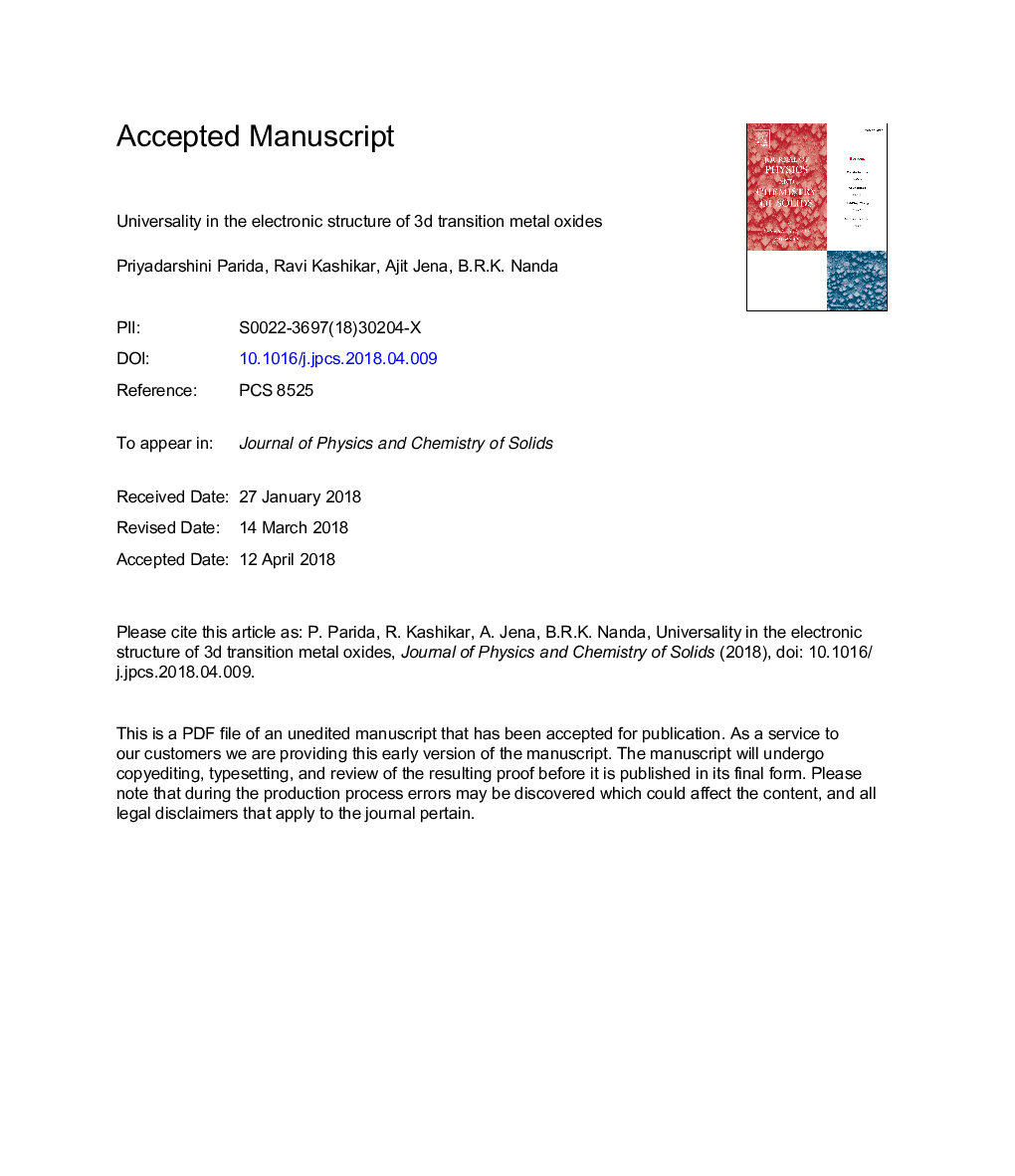| Article ID | Journal | Published Year | Pages | File Type |
|---|---|---|---|---|
| 7919807 | Journal of Physics and Chemistry of Solids | 2018 | 34 Pages |
Abstract
Electronic structure of strongly correlated transition metal oxides (TMOs) is a complex phenomenon due to competing interaction among the charge, spin, orbital and lattice degrees of freedom. Often individual compounds are examined to explain certain properties associated with these compounds or in rare cases few members of a family are investigated to define a particular trend exhibited by that family. Here, with the objective of generalization, we have investigated the electronic structure of three families of compounds, namely, highly symmetric cubic mono-oxides, symmetry-lowered spinels and less explored asymmetric olivine phosphates, through density functional calculations. From the results we have developed empirical hypotheses involving electron hopping, electron-lattice coupling, Hund's rule coupling, strong correlation and d-band filling. These hypotheses, classified through the point group symmetry of the transition metal - oxygen complexes, can be useful to understand and predict the electronic and magnetic structure of 3d TMOs.
Related Topics
Physical Sciences and Engineering
Materials Science
Electronic, Optical and Magnetic Materials
Authors
Priyadarshini Parida, Ravi Kashikar, Ajit Jena, B.R.K. Nanda,
